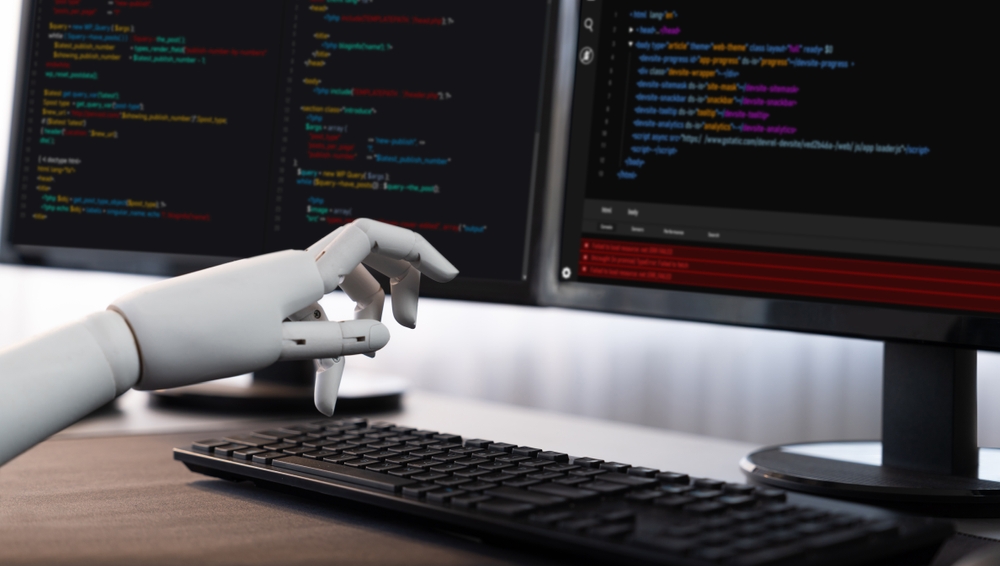Laying the groundwork: Skills and strategies for AI development
Within the dynamic and fast-paced world of artificial intelligence (AI), the fusion of technology, coding, and strategic planning is pivotal. This guide is designed to navigate the intricacies of AI development, emphasizing the technological and coding expertise required for crafting sophisticated AI solutions.
AI project development is a multidisciplinary endeavor that requires a deep understanding of theoretical concepts and practical applications. As we delve into this guide, we’ll focus on the core technical competencies and methodologies essential for building effective and innovative AI systems.
Selecting the right tools and languages
The foundation of any AI project lies in choosing the appropriate programming languages and tools. Python is the predominant language due to its simplicity, readability, and extensive support of libraries and frameworks like TensorFlow, PyTorch, and Scikit-learn. These frameworks offer comprehensive tools that simplify complex algorithms, data processing, and model training, making them indispensable for AI development.
Beyond Python, it’s crucial to have a grasp of other languages and technologies relevant to specific aspects of AI projects. For example, R is invaluable for statistical analysis and data visualization, while C++ can be essential for performance-intensive applications.
Deep dive into AI and machine learning models
Understanding various AI and machine learning models is crucial. Each model serves different purposes, from simple linear regression for predictive analysis to complex deep learning networks capable of image recognition and natural language processing.
Deep learning, a subset of machine learning, has gained prominence for its prowess in handling vast amounts of unstructured data. Frameworks like TensorFlow and PyTorch provide pre-built layers and training mechanisms that significantly ease the development of neural networks.
For projects requiring real-time decision-making, reinforcement learning offers a framework where models learn to make sequences of decisions by interacting with an environment to achieve a goal.
Developing and coding AI models
Coding AI models involves several stages, from data preprocessing and feature extraction to model training and evaluation. Data preprocessing includes normalization and transformation techniques to make the dataset suitable for model training. Feature extraction involves identifying the most relevant attributes from the dataset that influence the model’s predictions.
The coding phase is iterative, requiring continuous refinement and testing. It’s essential to write clean, modular code and use version control systems like Git for collaboration and iteration. Jupyter Notebook is a popular choice for prototyping and sharing AI projects, offering an interactive coding environment that supports live code, visualizations, and markdown.
👋 Looking to elevate your business with custom AI solutions?
Curotec specializes in crafting bespoke AI strategies that drive growth and innovation. Reach out to our experts today to explore how we can transform your ideas into impactful AI applications.
Training and refining your models
Model training is a compute-intensive process that involves feeding data through the model multiple times to minimize error. This process is facilitated by using GPUs or cloud-based AI platforms that offer scalable computing resources.
Hyperparameter tuning is a critical step in refining AI models. It involves adjusting the parameters that govern the model training process to improve performance. Tools like Google’s HyperTune and Amazon SageMaker offer automated hyperparameter optimization, saving time and computational resources.
Model evaluation is not just about accuracy but also about how the model performs on unseen data. Techniques like cross-validation and metrics such as precision, recall, and the F1 score are used to assess model performance comprehensively.
Deployment and integration
Deploying AI models into production environments is the final step in making them accessible to end-users. Deployment strategies must consider scalability, reliability, and security. Containerization tools like Docker and orchestration platforms like Kubernetes have become standard for deploying and managing AI applications due to their efficiency in handling dependencies and scalability.
Once deployed, AI models need to be integrated with existing systems and applications. This integration requires careful planning and execution, ensuring that the AI model’s inputs and outputs align with the operational workflows.
Continuous learning and adaptation
Rapid advancements and continuous learning characterize AI and machine learning fields. Staying abreast of the latest research, tools, and best practices is essential for maintaining and enhancing the effectiveness of AI solutions. Online platforms like arXiv and conferences such as NeurIPS and ICML are valuable resources for keeping up with the latest developments.
Conclusion
Building AI solutions is a complex yet rewarding challenge that requires a blend of coding expertise, technical knowledge, and strategic planning. By focusing on the right tools, understanding AI models, and adhering to best practices in development and deployment, teams can deliver AI solutions that drive innovation and value.
The journey of AI development is continuous, with each project offering new insights and opportunities for growth. Embrace the iterative process, collaborate across disciplines, and remain committed to lifelong learning to navigate the ever-evolving landscape of artificial intelligence.
Ready to take your AI projects from concept to reality? Curotec’s team of seasoned professionals is here to guide you through every step of the AI development journey. Let’s collaborate to create AI solutions that set your business apart.



